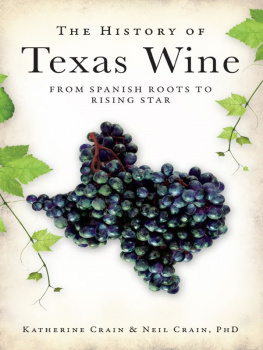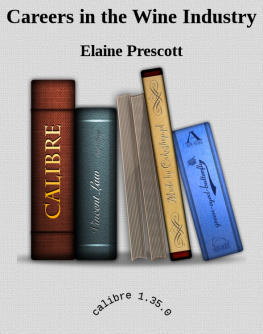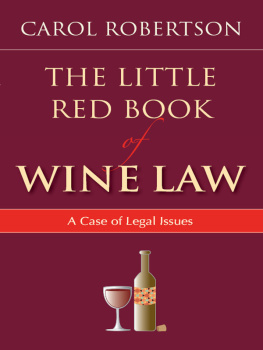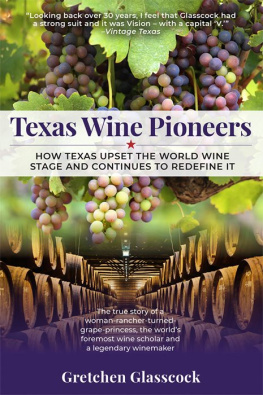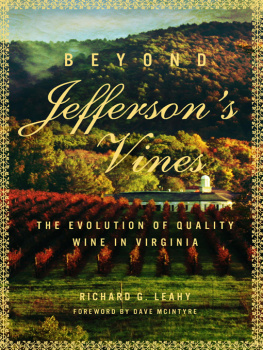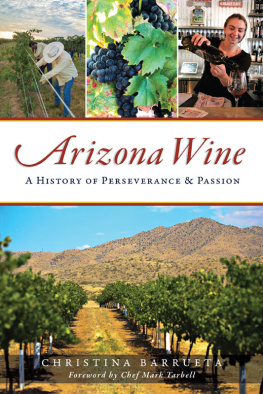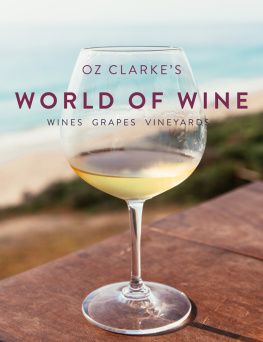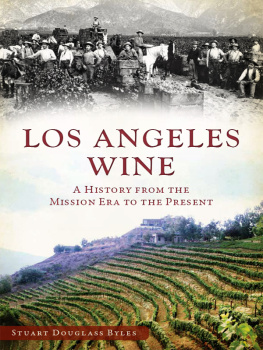

Published by American Palate
A Division of The History Press
Charleston, SC 29403
www.historypress.net
Copyright 2013 by Katherine Crain and Neil Crain
All rights reserved
All images are courtesy of the author, except for the images of Governor Hobby and Miriam Ferguson, which are used with the permission of the Texas State Preservation Board, all rights reserved.
First published 2013
e-book edition 2013
Manufactured in the United States
ISBN 978.1.62584.562.7
Library of Congress CIP data applied for.
print edition ISBN 978.1.60949.012.6
Notice: The information in this book is true and complete to the best of our knowledge. It is offered without guarantee on the part of the authors or The History Press. The authors and The History Press disclaim all liability in connection with the use of this book.
All rights reserved. No part of this book may be reproduced or transmitted in any form whatsoever without prior written permission from the publisher except in the case of brief quotations embodied in critical articles and reviews.
Contents
Introduction
The Texas wine industry is a hot topic these days, and not just because of the weather. The Texas wine country is the second most visited wine region in the nation. Texas wines are receiving more accolades and awards than ever before, and the state gets almost $2 billion of economic activity from the industry each year. These are impressive facts, but they tell only the most recent part of the story. Wine has been produced and consumed in Texas for almost 350 years. Wine played an important role in Spanish colonial Texas, and the desire for their own vineyards led many German immigrants to Texas in search of a vine land. After the Civil War, Texas grapevinesin particular, their rootsplayed an important role in saving the European wine industry. Following Prohibition, Texas wine fought its way back from near extinction, and today it is creating an opportunity for Texas farmers and entrepreneurs. How all of this happened is a great story and one that is intimately connected to the history of Texas and the Southwest.
It has been a pleasure to revisit Texas history for this book. Like all Texans who attend public schools, we had been told the story of Texas but had forgotten most of it and apparently misremembered the rest. Relearning the story of Texas was rewarding. This time, however, we also had access to lots of wonderful side stories that did not make it into state-approved history books. Of course, we are referring to the Internet and all the information that it makes available. Sites such as the Handbook of Texas Online (http://www.tshaonline.org/handbook/online) and Google Books (http://books.google.com/) help to make history come alive by making available stories of the not-so-famous but still important people and places that are history.
When we started working on the part of the story about the modern Texas wine industry, we thought we already knew quite a lot. We have been collecting wine for more than twenty years and had visited many Texas wineries, particularly in the Texas Hill Country near our home in Austin. While we enjoyed our earlier visits, many of the wines we tasted in years gone by had not yet found their voice. Most wineries were trying to follow Californias lead and plant famous European grape varietals such as Cabernet Sauvignon and Chardonnay. The results we tasted were often disappointing. At that time, many winemakers were making generous use of oak. A big California Cab or Chardonnay might be able to stand up to lots of oak, but the subtle nuances of many Texas wines were lost in the forest of oak in each glass. Finally, the surprising cost of starting and operating a vineyard forced many wineries to charge top dollar for their wine.
So when we started this project, we had relatively low expectations about the wines we were going to find, and we were almost immediately surprised. Many of the wines we tasted showed very well. Gone were most of the thin, oaky Cabs and grassy, oaky Chardonnays. Increasingly, wineries were offering warm-weather grapes such as Shiraz, Tempranillo and Vermentino. Oak was certainly still there but in judicial amounts, and prices at many wineries were more in line with the current international market. This is not to say that the journey for Texas wine is over; it is not. But as a whole, the Texas wine industry has made huge strides and redoubled its efforts to produce good wines at affordable prices. We believe the future for Texas wine is bright, and we are looking forward to watching it grow and mature.
The story that follows starts in the late sixteenth century and ends in 2012. Every attempt has been made to be sure that the people and places that are part of this story have been included in these pages, but Texas is a big place, and its wine industry is rapidly changing. Despite several attempts with state agencies and industrial groups, we were unable to get a complete list of the wineries in Texas. As we have driven around the state (almost two thousand miles in the last three months alone), we have discovered wineries that were not on any of our lists. We are sure that there are wineries that we did not discover, but driving around Texas looking for them is not very efficient. If we have left out your favorite wine story or missed some wineries or did not know a winery closed, we apologize. Learning about Texas wine has been great fun, and we wish the wine community of Texas good luck!
Cheers,
Kathy and Neil Crain
CHAPTER 1
In the Beginning
Beginning with the Spanish explorers and continuing to the present day, the story of Texas is both remarkable and unique. Men such as Ren-Robert Cavelier, Sieur de La Salle; Stephen F. Austin; Jim Bowie; and Davy Crockett explored, settled and defended a land unlike any other. Their story is one that folks, particularly Texans, never get tired of telling or hearing. This book is devoted to a very small part of that great story: the history of Texas wine. As this is a rather narrow slice of a greater story, we will not spend much time on some of the big events that are part of Texas history. That is not to say that we think the story of La Salles failed expedition or the Alamo or the faithful Battle of San Jacinto are not important. They are. Instead, we will focus on how these events shaped immigration, population centers, agricultural practices and even international relations and how, in turn, these things affected Texas wine.
PRE-COLONIAL TEXAS
Before Europeans arrived in the New World, there wasnt any place in Texas to get a good glass of wine or even a glass of wine at all. The native people of North America did not produce a drink from the numerous types of grapes that grew wild in the area that is now known as Texas. Given the hundreds of grape varietals that flourished here, it must have surprised the Europeans that none of the native people made anything like wine. After all, Europeans considered wine a part of their heritage going back thousands of years. From the European perspective, this must have supported the notion that Native Americans were primitive. In retrospect, the absence of an alcoholic grape-based drink is not so surprising. There were plenty of plants that offered natural intoxicants that did not require the manipulation needed to make wine from grapes. Tobacco, marijuana, several types of mushrooms and peyote grew wild in Texas. These plants required little manipulation to produce intoxicating results. Furthermore, most of the tribes that inhabited Texas were nomadic peoples without the agrarian practices or the physical infrastructure required to produce wine.
Next page
